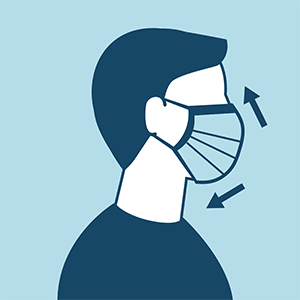COVID-19 is thought to spread mainly through close contact from person-to-person in respiratory droplets from someone who is infected. People who are infected often have symptoms of illness. Some people without symptoms may be able to spread virus. According to the Centers for Disease Control and prevention, “COVID-19 is a new disease and we are still learning about how it spreads and the severity of illness it causes.”
Person-to-person spread
The virus is thought to spread mainly from person-to-person.
• Between people who are in close contact with one another (within about 6 feet).
• Through respiratory droplets produced when an infected person coughs, sneezes or talks.
• These droplets can land in the mouths or noses of people who are nearby or possibly be inhaled into the lungs.
• Some recent studies have suggested that COVID-19 may be spread by people who are not showing symptoms.
Maintaining good social distance (about 6 feet) is very important in preventing the spread of COVID-19.
Spread from contact with contaminated surfaces or objects
It may be possible that a person can get COVID-19 by touching a surface or object that has the virus on it and then touching their own mouth, nose, or possibly their eyes. This is not thought to be the main way the virus spreads, but we are still learning more about this virus.
Wash your hands often with soap and water. If soap and water are not available, use an alcohol-based hand rub. Also, routinely clean frequently touched surfaces.
How easily the virus spreads
How easily a virus spreads from person-to-person can vary. Some viruses are highly contagious, like measles, while other viruses do not spread as easily. Another factor is whether the spread is sustained, which means it goes from person-to-person without stopping.
The virus that causes COVID-19 is spreading very easily and sustainably between people. Information from the ongoing COVID-19 pandemic suggests that this virus is spreading more efficiently than influenza, but not as efficiently as measles, which is highly contagious.


Protect yourself and others
On April 30, Gov. Laura Kelly announced the plan to reopen Kansas. During all the phases of the plan, Kansans should continue to adhere to hygiene and social distancing protocols, including:
• Washing hands frequently, while avoiding contact with one’s face;
• Remaining home when sick or running a fever;
• Following isolation and quarantine orders issued by state or local health officers;
• Wearing a cloth face mask when in public; and
• Working remotely, if possible.




